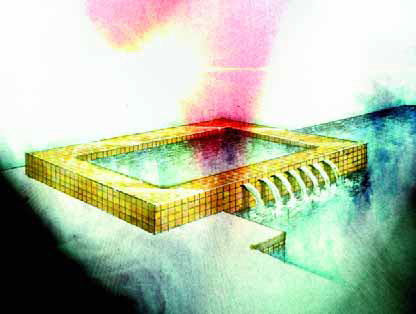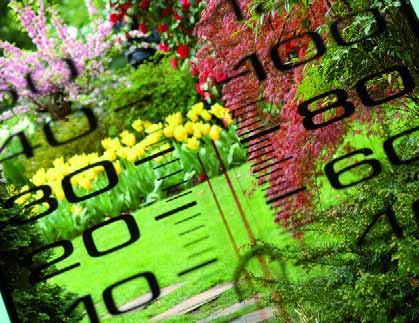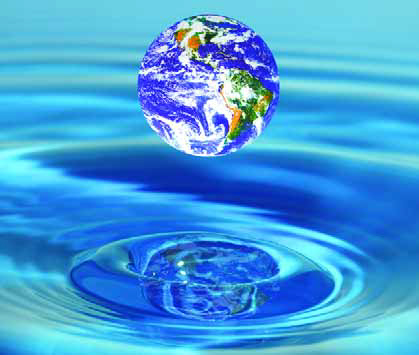ARTICLES
Advance Search
Aquatic Health
Aquatic Health, Fitness & Safety
Around the Internet
Aquatic Culture
Aquatic Technology
Artful Endeavors
Celebrity Corner
Life Aquatic
Must-See Watershapes
People with Cameras
Watershapes in the Headlines
Art/Architectural History
Book & Media Reviews
Commentaries, Interviews & Profiles
Concrete Science
Environment
Fountains
Geotechnical
Join the Dialogue
Landscape, Plants, Hardscape & Decks
Lighter Side
Ripples
Test Your Knowledge
The Aquatic Quiz
Other Waterfeatures (from birdbaths to lakes)
Outdoor Living, Fire Features, Amenities & Lighting
Plants
Ponds, Streams & Waterfalls
Pools & Spas
Professional Watershaping
Structures (Editor's Notes)
Travelogues & History
Water Chemistry
WaterShapes TV
WaterShapes World Blog
Web Links
Around the Internet
Aquatic Culture
Aquatic Technology
Artful Endeavors
Celebrity Corner
Life Aquatic
Must-See Watershapes
People with Cameras
Watershapes in the Headlines
Last time, I described (at great length, as you may have noticed) what happens in the time between my initial phone conversation with clients and a point just ahead of my formal presentation of a design. It's an involved process that uses all of the information I've gleaned from my clients about what they want, what they think they need and what they ultimately expect to have in their backyard environments. It's about understanding the underlying circumstances, deciding what should be done and, finally, assembling all of that insight into a
Last time, I described (at great length, as you may have noticed) what happens in the time between my initial phone conversation with clients and a point just ahead of my formal presentation of a design. It's an involved process that uses all of the information I've gleaned from my clients about what they want, what they think they need and what they ultimately expect to have in their backyard environments. It's about understanding the underlying circumstances, deciding what should be done and, finally, assembling all of that insight into a
As much as I love cold weather, I have to concede that we experienced way too much of a good thing this past winter. Long periods of extremely cold weather are the norm in many other parts of the country, and plants survive. Here, however, our local plants may be accustomed to surviving the isolated sub-freezing night, but sustained, frosty temperatures lasting nearly a week are something they weren't meant to handle. I'm sure you've seen the results of our cold snap in the news: Much of the state's citrus population - yes, coincidentally, the wonderful treats I wrote about in last month's column - has sustained long-term damage and the trees in many cases will take two years and more to recover. And that doesn't just affect us here: The rippling effects will be felt in
As much as I love cold weather, I have to concede that we experienced way too much of a good thing this past winter. Long periods of extremely cold weather are the norm in many other parts of the country, and plants survive. Here, however, our local plants may be accustomed to surviving the isolated sub-freezing night, but sustained, frosty temperatures lasting nearly a week are something they weren't meant to handle. I'm sure you've seen the results of our cold snap in the news: Much of the state's citrus population - yes, coincidentally, the wonderful treats I wrote about in last month's column - has sustained long-term damage and the trees in many cases will take two years and more to recover. And that doesn't just affect us here: The rippling effects will be felt in
They don’t come along very often, but every once in a while some of us are fortunate enough to become involved with a project that redefines what watershaping is all about. St. Lucia’s Jade Mountain was one of those remarkable opportunities, and no matter how long I’ll be in this business, I’m certain there will never be another project quite like this one. For starters, it stands as perhaps the most extensive and spectacular all-time use of the vanishing edge – ever, anywhere – all set in one of the most unusual buildings ever imagined for a resort property in a location that is almost indescribably beautiful. The brainchild of architect/owner Nick Troubetzkoy, Jade Mountain is
Whether you call yourself an environmentalist or not, the current information about climate change and a range of related issues is something you need to consider. Before you react to that statement, be advised that you don't have to accept global warming as fact or anything else experts and scientists might say at face value. What you do have to accept, however, is that there's enough going on in those arenas that your clients are picking up on it - and personally, that's more than enough motivation for me to start paying attention sooner rather than later. In other words, as both enlightened citizens and forward-thinking watershapers, I think things are at a point where it's probably wise to
Whether you call yourself an environmentalist or not, the current information about climate change and a range of related issues is something you need to consider. Before you react to that statement, be advised that you don't have to accept global warming as fact or anything else experts and scientists might say at face value. What you do have to accept, however, is that there's enough going on in those arenas that your clients are picking up on it - and personally, that's more than enough motivation for me to start paying attention sooner rather than later. In other words, as both enlightened citizens and forward-thinking watershapers, I think things are at a point where it's probably wise to
I first came to St. Lucia in 1970 to work for a Canadian architectural firm based on the island. As it has turned out, I never left. The beauty of St. Lucia’s landscapes, the warmth and character of its people and the unlimited potential to create something very special here captured my imagination. It’s a Caribbean paradise one must experience personally to fully appreciate and understand. When I first encountered the property that is now home to Anse Chastanet and Jade Mountain in 1974, there was almost nothing here – a handful of small bungalows nestled in the rainforest across maybe five acres of land. Amenities included four aluminum umbrellas and four plastic lounge chairs on the sand, and there was a lady who sat at the bottom of the stairs leading to the beach. She had a cooler filled with Cokes and a bottle of local rum, enabling you to enjoy the beautiful setting and have a drink. But the occupancy rate was very low and nothing about the place beyond the setting would make
You hold in your hands an entirely unique issue of WaterShapes - distinct in that all four of the feature articles are about a single project called Jade Mountain. Time will tell, of course, but Jade Mountain may turn out to be
You hold in your hands an entirely unique issue of WaterShapes - distinct in that all four of the feature articles are about a single project called Jade Mountain. Time will tell, of course, but Jade Mountain may turn out to be


















